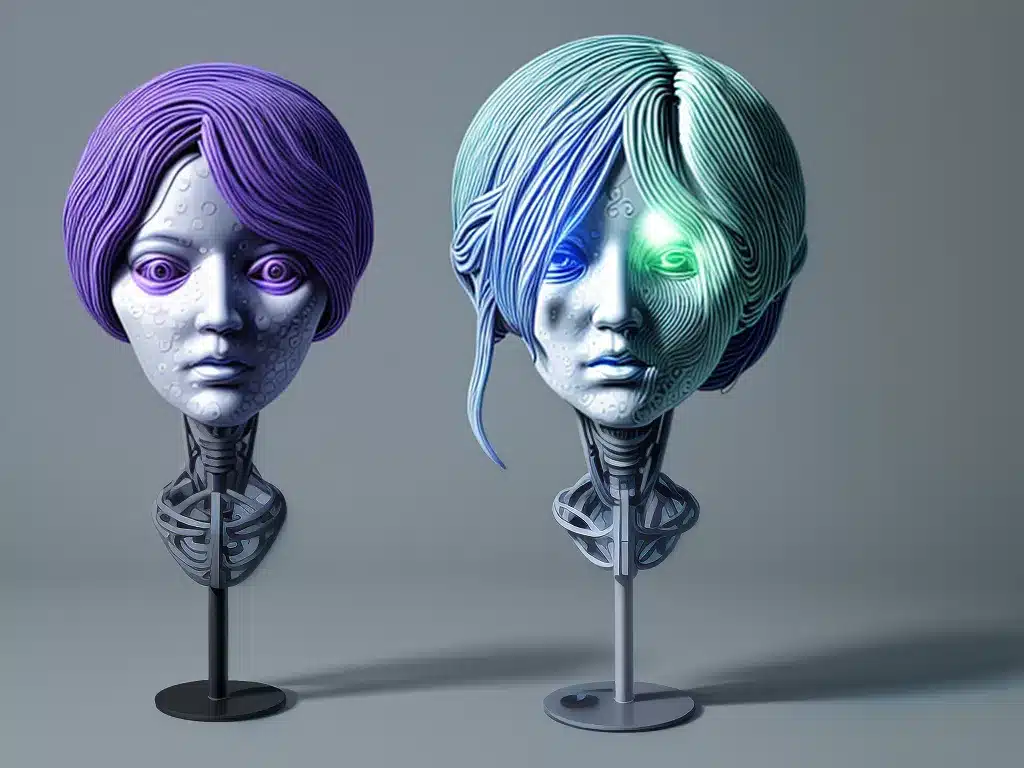Introduction
Artificial intelligence (AI) art generators, like DALL-E and Stable Diffusion, have exploded in popularity recently. These tools allow users to create stunning digital art and images simply by describing what they want in text prompts. But a debate rages on about the implications of this new technology. In this article, I will dive deeply into the world of AI art generation to examine both sides of this debate and come to my own informed conclusions.
The Excitement Around AI Art
There’s no doubt that AI art generators are incredibly exciting and allow for amazing creative possibilities. Here’s a quick look at some of the main benefits driving the hype:
Accessibility
- AI art tools democratize art creation – anyone can make beautiful, intricate images even with zero artistic skill. This provides new creative outlets for many.
Efficiency
- Humans spend hours or days making a single work of art. But AI can generate intricate images almost instantly from a text prompt.
Customization
- Users can customize images endlessly by tweaking text prompts. This allows for boundless exploration of new ideas.
Financial Opportunity
- Some AI artists now sell their generated works as NFTs or on stock sites. This creates new potential revenue streams for users.
With all of these benefits, it’s no wonder people are excited about experimenting with these AI tools! For many, they represent creativity unleashed.
Concerns Around AI Art
However, some have raised ethical, legal, and existential concerns about this new technology:
Originality
- Does art created by AI inherently lack originality or a human touch? Can it ever be considered “true art”?
Copyright Infringement
- Training datasets likely contained copyrighted images scraped from the web without permission. This raises legal concerns.
Data Bias
- The training data shapes how AI generates images. Biased data can lead to problematic stereotypical outputs.
Threat to Human Artists’ Livelihoods
- If AI art becomes good enough, could it put professional artists out of work by automating creative jobs?
Existential Threat of “Superintelligence”
- While far-fetched currently, truly advanced AI in the distant future could have catastrophic consequences according to some thinkers. AI art experiments inch us closer.
These concerns range from practical to philosophical but make it clear there is an urgent need to discuss appropriate policies and oversight for this technology.
My Take on the AI Art Debate
So where do I stand on this complex issue after considering both the potential benefits and risks? Here is my perspective:
The Technology is Here to Stay
- Like previous technological advancements, AI art generators cannot be “un-invented.” The cats already out of the bag. The best course of action is to steer this technology responsibly.
More Democratization is Positive
- Overall, AI art does have great potential to empower more people creatively, which I believe is a good thing. But policies should protect human artists as well.
address legitimate ethical concerns
- Issues around data bias, copyright, and creative displacement must be taken very seriously by tech companies and policymakers. Clear laws and oversight are needed.
Not an Existential Threat Yet
- While advanced AI could become dangerous, today’s image generators are quite narrow and limited. Their “intelligence” poses no real threat currently.
Focus on responsible innovation
- The tech community should self-regulate and proactively develop AI art responsibly, consulting impacted communities. Safety and ethics should be top priorities.
So in summary, I believe AI art generators do represent an exciting new creative frontier. But legitimate concerns exist and must be addressed proactively, not dismissed. With wise policies and innovation grounded in human values, this technology could empower people while minimizing harm. The path forward should maximize societal benefit through responsible stewardship.
The Future of AI Art
Given the rapid pace of AI research, what might the future hold for AI art generation? Here are some potential developments on the horizon:
-
Steady improvements in image quality and coherence – algorithms will continue to get better at generating high-fidelity, polished artworks based on prompts
-
Video generation – new systems may be able to generate short videos and animations from text prompts
-
Interactive AI art – some research projects explore conversational AI that could collaborate with human artists in real-time
-
Specialized AI artists – future systems could develop simulated personalities and expertise in particular styles like landscapes, portraits, etc.
-
Multimodal art – AI could combine image generation with music or poetry generation for multimedia experiences
-
Democratized AI art creation – simpler tools aimed at non-experts could emerge, allowing anyone easy access to AI art
-
AI assistants – AI tools may assist human artists with tasks like concept generation rather than fully automating creative jobs
The rapid pace of progress makes the future of AI art generation difficult to predict precisely. But it seems likely this technology will continue opening new creative possibilities while raising important societal questions. Ongoing responsible dialogue between researchers, policymakers, artists and the public will be key to steering innovations in a wise direction.
Conclusion
The advent of AI art generators represents a watershed moment at the intersection of technology and creativity. As with any powerful new technology, it brings an array of opportunities and risks. But I believe that with thoughtful policies and responsible innovation centered on human values, these tools can empower people and expand access to creative expression, while addressing legitimate concerns around data bias, creative displacement, and existential risk. Wise stewardship of AI art that respects all stakeholders will be critical in the years ahead. If guided down a prudent path, this technology could make art more participatory while illuminating the enduring spark of human originality.













